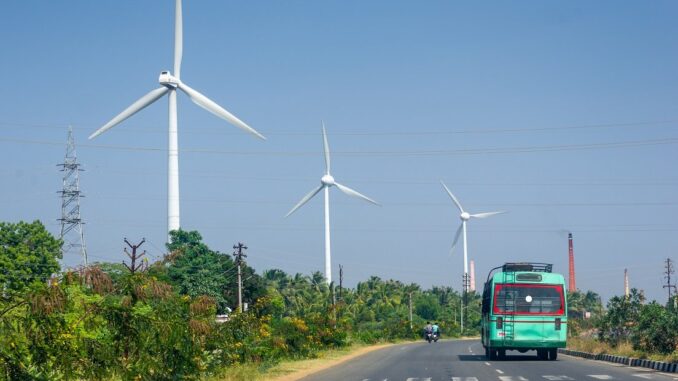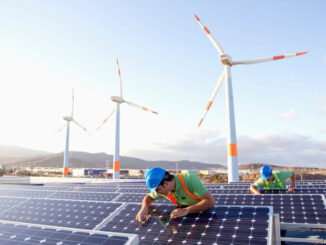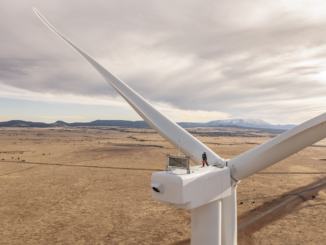
Transport, as one of the largest contributors to carbon emissions globally, must be a priority as governments around the world accelerate their efforts to tackle decarbonisation. Current plans don’t go far enough.
The renewed urgency is creating a number of opportunities for investors in transport infrastructure, especially in emerging markets (EM).
Why is transport so hard to decarbonise?
The transport sector is one of the biggest contributors to total greenhouse gas emissions (GHG) globally, accounting for around 20% globally every year. Decarbonising transport is vital if net zero targets are to be met.
It is not just the huge scale of the challenge that makes it a hard to tackle, it is also growing rapidly. The world population is projected to reach 8.5 billion by 2030, 9.7 billion by 2050 and 11.2 billion by 2100. Transport’s fundamental social and economic roles mean demand for transport is also anticipated to grow massively in the coming decades. GHG emissions from transport activity could increase by 60% by 2050.
For developing countries the task is especially difficult. In many EM, emissions from transport are growing far faster than the economies. Between 1990-2018, for example, transport emissions grew twice as fast as GDP in Nigeria, and six times as fast in Nepal. Delivering efficient, safe, and affordable mobility, with a small climate footprint poses a gargantuan task.
Even so, the world is waking up to the fact that even if current and committed policies were to succeed, net zero is not achievable. Transport’s carbon emissions would still grow almost 20% by 2050. Highly ambitious policies could cut these emissions by 70% – but not to zero.
More aggressive policies are being implemented and even more ambitious decarbonisation targets are being set. As more governments around the world engage with renewed vigour, many of the barriers hindering faster progress of decarbonisation should crumble. This is creating tremendous opportunities for investors.
The four key decarbonisation themes driving opportunities
- Increase energy efficiency
Increasing energy efficiency is one of the best paths to decarbonisation. Mandatory fuel economy standards are accelerating improvements demanded in emissions intensity. Corporate average fuel efficiency/economy (CAFE) regulations are in force in many nations, both advanced and developing. These standards and regulations seek to lower fuel consumption and/or improve fuel efficiency by lowering carbon dioxide (CO2) emissions, and serve the twin purposes of reducing dependence on oil for fuel and controlling pollution. The European Commission has adopted a package of legislative proposals called “Fit for 55” as part of the European Green Deal, which aims to reduce net emissions by at least 55% (compared to 1990) by 2030.
- Low-carbon fuels
For areas where electrification is not a realistic option—especially hard-to-abate sectors such as aviation and shipping—low-carbon fuels will be essential. The maritime shipping sector is projected to represent up to 10% of all global emissions by 2050, and the electrification of ships is not yet a viable option. Low-carbon fuels—in particular, biofuels and fuels based on blue and green hydrogen—offer a variety of potential solutions to challenges that EVs face.
- Transport demand management (TDM)
TDM is a strategy which aims to maximise the efficiency of the transportation system by promoting more effective, healthy and environmentally-friendly modes of transport. It aims to get people out of single-occupancy vehicles and into more efficient modes of commuting, such as public transport, car-pooling, ridesharing, and using non-motorised vehicles such as bicycles.
- Electrification
In the push towards decarbonisation, electrification is a game changer. Road transport currently accounts for around three-quarters of global transport energy. The electrification of vehicles alongside walking, cycling and taking public transport are key initiatives that will help us achieve this target. For example, although higher vehicle costs have slowed uptake by individuals, the long-term economies of (total cost of ownership = running costs + purchase price) electrifying commercial vehicle fleets makes commercial sense.
What are the opportunities for EM infrastructure investors?
If we’re going to triple the scale of investment required for net zero – from $390 billion per year in the early 2020s to $1.2 trillion in the 2030s – mobilising private finance is critical.
Electrification
Of the four key decarbonisation drivers, electrification is arguably the richest source of investment opportunities today.
The Indian automotive industry is the fifth largest in the world, and projected to be the third largest by 2030. Catering to a vast domestic market, reliance on the conventional modes of fuel intensive mobility will not be sustainable. By making the shift towards EVs, India stands to benefit on many fronts. India boasts an abundance of renewable energy resources and availability of skilled personnel in the technology and manufacturing sectors.
India already has the largest corporate fleet commitment in the EV100. The EV100 consists of 122 entities which have made a commitment to switch their vehicle fleets to EVs and/or install charging for staff and/or customers by 2030. It includes companies like Flipkart, Myntra, IKEA and Zomato, all of which have committed to 100% EV transition by 2030. India’s planned electrification of 194,388 vehicles is ahead of the 176,154 planned units in the UK and 71,264 in France.
Electrification of transportation is also gaining increased interest in ASEAN countries. As EVs gain wider acceptance across the automotive industry, many manufacturers are becoming increasingly involved. Thailand is one of the leading EV markets in south-east Asia, with a roadmap to manufacture about 1.2 million EVs and establish 690 charging stations.
Automakers are also showing interest, not only in manufacturing EVs, but also in building the requisite charging infrastructure, such as VinFast in Vietnam.
South-east Asia is also set to become a global hub for battery manufacturing. In Thailand, the Thai Board of Investment has approved 10 battery manufacturing projects. These will have an annual capacity of 500,000 car batteries and two charging station manufacturing projects that will produce more than 4,400 outlets each year.
The Indonesian government is looking to set up a state-owned battery holding company to manufacture 8 to 10 GWh worth of batteries annually. The country is endowed with abundant nickel reserves, the main component of EV batteries, giving it the confidence to venture into the battery manufacturing space.
Low carbon fuels
Opportunities are also emerging for low carbon fuels. However, infrastructure to facilitate the widespread deployment of low carbon fuels is yet to be developed. Hydrogen, ammonia, methanol and liquefied methane require modifications to engine and fuel storage systems. For sustainable hydrogen to emerge as a viable industry requires optimising costs throughout the whole supply chain, as well as improved safety. Low carbon fuel pathways are not a short-term solution. Even so they have major decarbonisation potential and represent a number of medium- to long-term opportunities.
Japan plans to build a hydrogen supply network that includes Australia and Brunei as it aims to import 300,000 tons of the fuel a year by around 2030. The three countries have been working together to bring down costs for hydrogen to make it competitive with fossil fuels, laying a feasible path to reducing the carbon footprint.
Key to low-cost hydrogen will be its extraction from lignite coal, which is abundant in Australia. Because of its poor quality, lignite is not extensively shipped around the world and costs are low. Carbon emissions during the hydrogen production process will be reduced via capture and storage technologies. The Japanese-Australian venture producing hydrogen from brown coal has set to start loading its maiden cargo on the world’s first liquid hydrogen carrier in a test run early this year. Japanese shipbuilder Kawasaki Heavy Industries (KHI) built the ship named ‘Suiso Frontier’. Suiso is the Japanese word for hydrogen. In Brunei, a plant that extracts hydrogen from natural gas was completed in 2019, and shipments to Japan have already begun.
As the zero-carbon transition gathers pace, it increasingly looks like it has the potential to be an era-defining investment opportunity.



